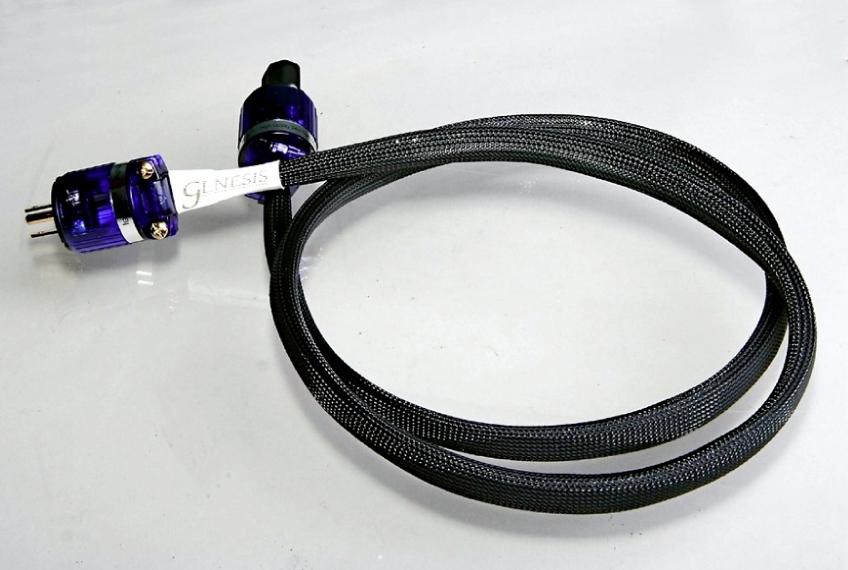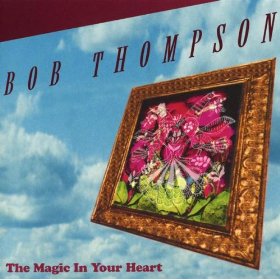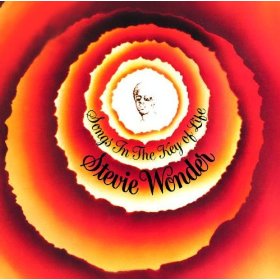The Absolute Fidelity Power Cord
|
The Absolute Fidelity Power Cord |
|
An Absolute Winner |
|
|
|
November, 2011 |

Young audiophiles may not know this, and older ones may not remember, but there once was a time when there were two Consumer Electronics Shows in the U.S. There was what used to be known as the Winter CES, which is now just known as the CES and still takes place in Las Vegas every January, and the Summer CES which took place in June in my hometown of Chicago, Illinois. The summer show left Chicago beginning in 1995 due to declining popularity and an extremely difficult working relationship with trade unions.
Back in 1981, I worked at what was then known as the Conrad Hilton (now called the Chicago Hilton & Towers) as a bellboy. It was a pretty sweet gig at the time. If you hustled, you could easily make a couple hundred bucks a day, especially when the CES came to town. While most of the electronics exhibits were over at the McCormick Place Convention Center, the high-end audio exhibits were at the Hilton. The great thing for bellboys like me was that many of the audio exhibitors would always try to avoid the additional costs of bringing their setups in through the loading dock and would pay us “a little something extra” to bring things in through one of the hotel’s side entrances. This was long before I had any serious interest in audio, so I hardly remember any of the exhibitors that I might have helped out.
But those were the good old days of high-end audio in the “Windy City.” Stores such as Pro Musica, Paul Heath Audio, Superior Audio, Chicago Speakerworks and Victor’s Stereo, were all thriving and easily accessible to city-dwelling audiophiles. Sadly, many stores left the city as new ones popped up in the suburbs. Don’t get me wrong, there’s nothing wrong with suburban audio stores, but as one of my old audio buddies recently told me, “There was a time when you could come to Chicago and spend a day visiting a half dozen or so audio shops, a dozen great record stores, then enjoy a great steak dinner and top the day off with some wonderful live jazz, and you never needed to get in a cab. These days precious little in the way of audiophile excitement comes through Chicago anymore, and many of the shops that once flourished here, like the Summer CES, are distant memories. Ironically, there is actually an organization called the Chicago Audio Society even though it is not located in Chicago but in Arlington Heights, Illinois nearly an hour’s drive from downtown Chicago.
Tweak Studio
But last winter brought a breath of fresh audio air in the form of an event held by a relative newcomer to the Chicago audio scene, Tweak Studio. Arnold Martinez operates Tweak Studio out of his condominium in the prestigious Lakeshore East neighborhood. He features brands such as Burmester, Cary, Weiss, Sota, and Genesis Advanced Technologies.
Martinez hosted an event in a private suite in his condo building to unveil a complete Burmester system along with products from Genesis, Amarra and others. Among those in attendance were Robb Niemann, CEO of Burmester, Robert Robinson, Director of Engineering for Channel D Software, and Gary Koh, CEO of Genesis Advanced Technologies. The featured system was comprised of a Burmester 088 preamp, 089 CD player, 911 MK 3 power amp, 948 line conditioner, PH 100 Phono Stage, and V-3 Equipment Rack. The rest of the system was the Genesis 5.3 loudspeakers, Sota Millenia MK3 Turntable with Well Tempered Tonearm and a Blue Electric Magic Diamond phono cartridge. Channel D Pure Vinyl software was used to extract music from the A-D converter of the Burmester. Absolute Fidelity cables by Genesis were used throughout the system which was setup and tuned by Arnold Martinez and Gary Koh.
I can only imagine how much effort Martinez and Koh must have put into setting the system up, because despite high ceilings and floor to ceiling windows just steps behind the main listening position, they still managed to get extremely nice sounding results. The system was very resolved from top to bottom though the room really limited what the bottom end of the 5.3s was capable of. I’ve heard these speakers at numerous shows and that bass is something they do exceptionally well. But Martinez was a gracious host who put out a nice spread hors d’oeuvres and fine wines. He even gave a neat little presentation on turntable setup.
The Promise Land
Unfortunately, I could not stay for long and didn’t get to hear much music that I actually liked. But since then, I’ve been invited back a few times to get private demos from Martinez, primarily with the Burmester system. It was during a recent demo while Martinez was experimenting with changing the power cords that things started to get interesting. We had begun our listening session using the Burmester interconnect cables and the stock power cord that came with their amp.  While listening to “Promise Land” from the Bob Thompson CD, The Magic In Your Heart [Ichiban] I noticed that the bass seemed a bit overblown and thumpy. The midrange and treble were still dynamic as heck but that bass was a bit troubling. Frankly, this could have simply been a room issue and not at all related to the power cord, but I asked Martinez to see if a simple change in power cord might have any effect. He obliged and swapped out the stock Burmester Black Rondo cord for Gary Koh’s Absolute Fidelity power cords. The difference was immediate. We listened to “Promise Land” again and the bass thumpiness was gone while the musicality remained intact. We continued listening and the results were the same; the bass was deep and well-defined and the all-around sound was musical and nicely rendered.
While listening to “Promise Land” from the Bob Thompson CD, The Magic In Your Heart [Ichiban] I noticed that the bass seemed a bit overblown and thumpy. The midrange and treble were still dynamic as heck but that bass was a bit troubling. Frankly, this could have simply been a room issue and not at all related to the power cord, but I asked Martinez to see if a simple change in power cord might have any effect. He obliged and swapped out the stock Burmester Black Rondo cord for Gary Koh’s Absolute Fidelity power cords. The difference was immediate. We listened to “Promise Land” again and the bass thumpiness was gone while the musicality remained intact. We continued listening and the results were the same; the bass was deep and well-defined and the all-around sound was musical and nicely rendered.
Martinez agreed to let me take his pair of Absolute Fidelity power cords for a review and to use on the Classe’ Audio CA-M600 mono amps that had just arrived at my house. But a couple of weeks later Martinez called to tell me something that sort of explained why the Absolute Fidelity power cords made such an impact on the bass when I heard them at his place. “Gary told me that the power cords you are using were actually designed for use with subwoofers,” Martinez said. Apparently they were made for the subwoofers built into the 5.3 loudspeakers. Before long, Brian Tucker of Pro Audio, the Director of National Sales for Genesis Technologies sent me a new pair of Absolute Fidelity power cords to replace the ones that Martinez gave me.
According to Absolute Fidelity’s website, there are three types of power cords, each designed for a different purpose depending on the way that power is drawn. The first is the “Turntable Power Interface Cable” which is designed for components where the major requirement is to drive a motor. It has been optimized for turntables, especially those with regenerative power supplies, but can also be used for reel-to-reel tape decks as well. The next is the “Component Power Interface Cable” (the cable I believe Tucker sent me) which is designed for components with a low delta in power draw – such as preamps, DACs, phono-stages, etc. And the third is the “Amplifier Power Interface Cable” for components where there is a high delta in power draw – such as power amps, though not Class A amps, subwoofers and active-loudspeakers like the Genesis 5.3. The cables are constructed of 12 AWG silver plated copper with PTFE dielectric, 14 AWG OFC copper with PVC dielectric and metallized polypropylene with 24 AWG solid silver drain wire and a static shield with high carbon polyamide. The connectors are IsoTek cryo treated 24K Gold plated connectors.
Caution!
Please be aware that this power cable is not Underwriters Laboratories (UL) listed and should not be used directly into a wall outlet. It should be used between your components and a UL-listed power conditioner with safety protection. The cable has not been tested to the criteria of the UL abrasion test, so do not walk on it or use it anywhere there is the risk of abrasion. It also has not been tested to the criteria of the UL pinch test, so keep it away from sharp objects. It will not stand up to the UL crush test, so do not place your power amplifier or anything heavy on it. It will not stand up to the UL flex test, so do not let your kids use it as a jump rope when there is high-voltage flowing through it.
More Power Please
Now I’m not one to subscribe to the idea that power cords have musical characteristics, so when I say that the bass improved with the change in cords, I’m simply saying that the current flow through the Absolute Fidelity cable was such that it allowed better performance from the amps built into the 5.3 speakers and was also a solid match with the Classe’ amps. To see how these cords would work with other components, I swapped out my reference Entreq Audio Konstantin 09 cords on my XLH XL-11XS preamp and digital source components. The overall character of the sound was the same. Regardless of the component there were no major improvements or drawbacks to swapping in the Absolute Fidelity cords. It was a consistent performer.
But another surprise came when I replaced the Virtual Dynamics Nite II power cable that I had been using with my Acoustic Revive RTP-2 Ultimate Power Supply Box. I had been using the RTP-2 to connect the George-Warren Precision Sound turntable to my APC Power Conditioner. Doing so forced me to make adjustments to the table’s speed controller and motor because the platter seemed to be spinning at slightly higher RPMs. Once I made these adjustments I noticed that the overall focus of the soundstage was noticeably sharper. It was particularly noticeable on Stevie Wonder’s Songs in the Key of Life [Motown]. The horn sections on songs like “Sir Duke” and “I Wish” are extremely dynamic and come off as bright and hard if a system is not connected or set up right, but installing the Absolute Fidelity cord took off the edginess without downplaying the detail and dynamics. Soundstage width and depth were excellent. The influence these cords were having on this analog rig was startling. Bravo Absolute Fidelity!
Once I made these adjustments I noticed that the overall focus of the soundstage was noticeably sharper. It was particularly noticeable on Stevie Wonder’s Songs in the Key of Life [Motown]. The horn sections on songs like “Sir Duke” and “I Wish” are extremely dynamic and come off as bright and hard if a system is not connected or set up right, but installing the Absolute Fidelity cord took off the edginess without downplaying the detail and dynamics. Soundstage width and depth were excellent. The influence these cords were having on this analog rig was startling. Bravo Absolute Fidelity!
Conclusion
Bear in mind also that this improvement in sound is only via the effect of the power cable. Imagine what a full system connected with Absolute Fidelity might be capable of. Hopefully, I’ll get to answer that question at some point in the future. Meanwhile, I heartily recommend seeking out this power cable especially for systems that might be a bit bass-heavy or turntables where platter speed and stability are so critical.

Specifications
Connectors: 3 pin US 3-pin and 15 Amp IEC (20 Amp IEC as an option)
Outside Diameter: 12mm (1/2″)
Cable Construction: 1 X 12 AWG silver plated copper with PTFE dielectric
2 X 14 AWG OFC copper with PVC dielectric
Shielding: Metallized polypropylene with 24 AWG solid silver drain wire
Static shield with high carbon polyamide
USA Retail: $1,800 for a 1.5 meter length or $2,500 for a 2.5 meter length
Custom Lengths: $700 per additional meter
Address:
Absolute Fidelity
654 South Lucile Street
Seattle, WA 98108
Tel: (206) 762-8383
Fax: (206) 762-8389
http://www.absolutefidelity.com
Tweak Studio
175 N. Harbor Drive
Suite 4308
Chicago, IL 60601
Tel: (312) 235-6561
Email: sales@myavstudio.com
http://www.myavstudio.com
![]()
Don’t forget to bookmark us! (CTRL-SHFT-D)
Stereo Times Masthead
Publisher/Founder
Clement Perry
Editor
Dave Thomas
Senior Editors
Frank Alles, Mike Girardi, Russell Lichter, Terry London, Moreno Mitchell, Paul Szabady, Bill Wells, Mike Wright, and Stephen Yan,
Current Contributors
David Abramson, Tim Barrall, Dave Allison, Ron Cook, Lewis Dardick, John Hoffman, Dan Secula, Don Shaulis, Greg Simmons, Eric Teh, Greg Voth, Richard Willie, Ed Van Winkle, Rob Dockery, Richard Doran, and Daveed Turek
Site Management Clement Perry
Ad Designer: Martin Perry





Be the first to comment on: The Absolute Fidelity Power Cord